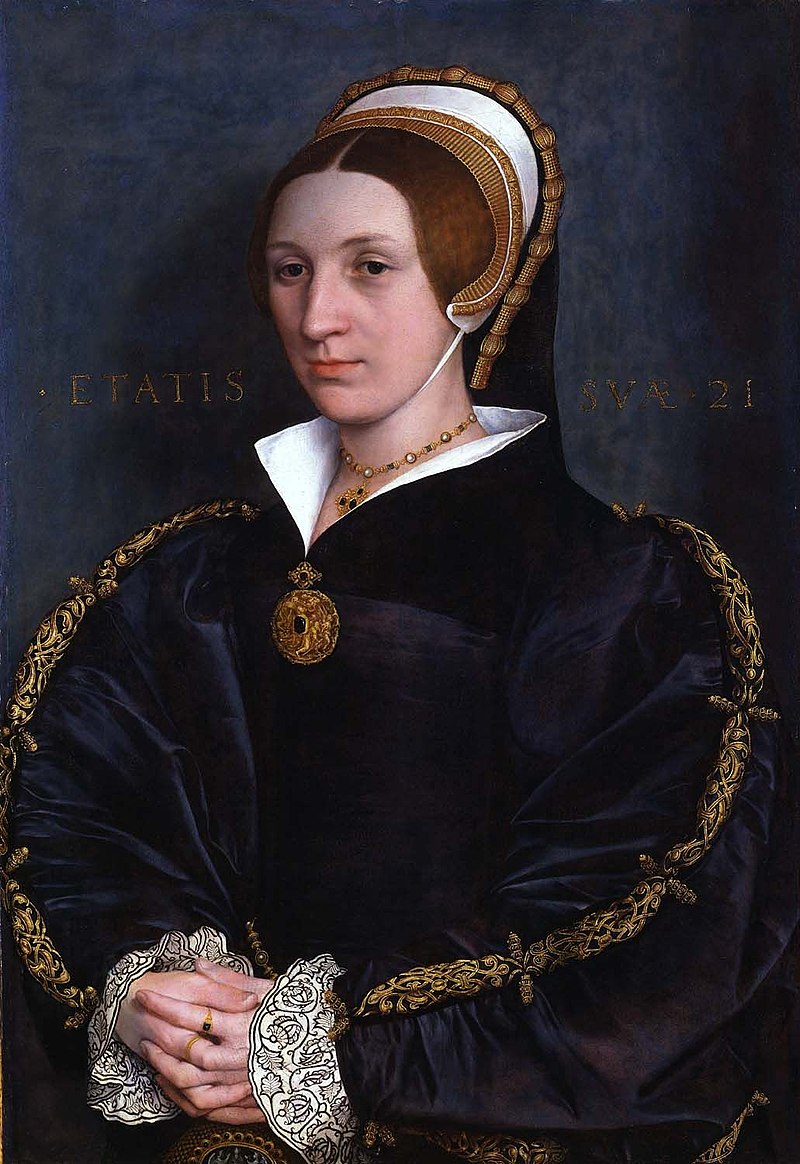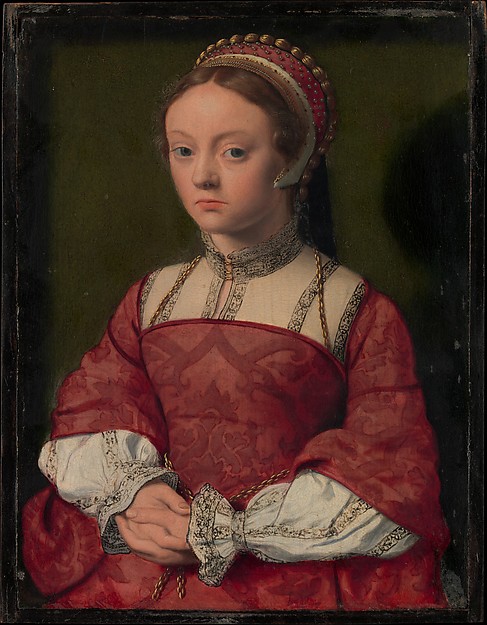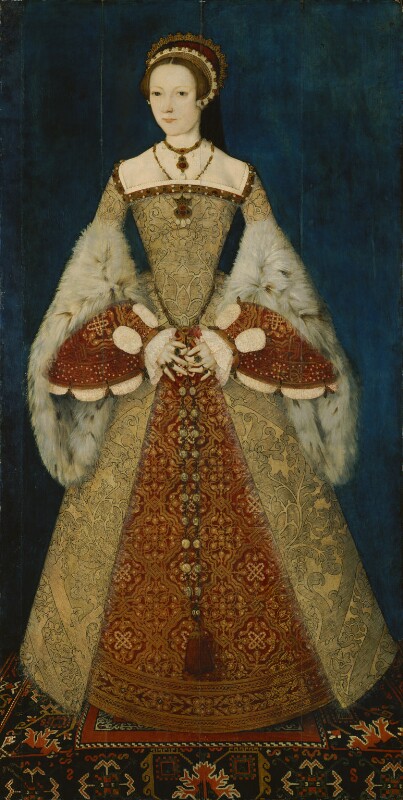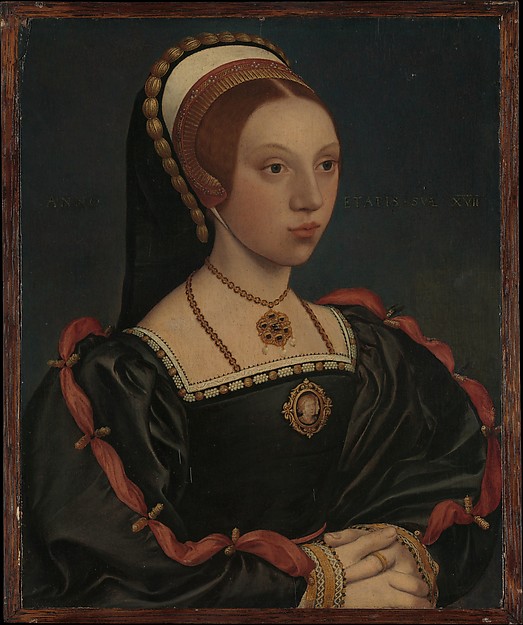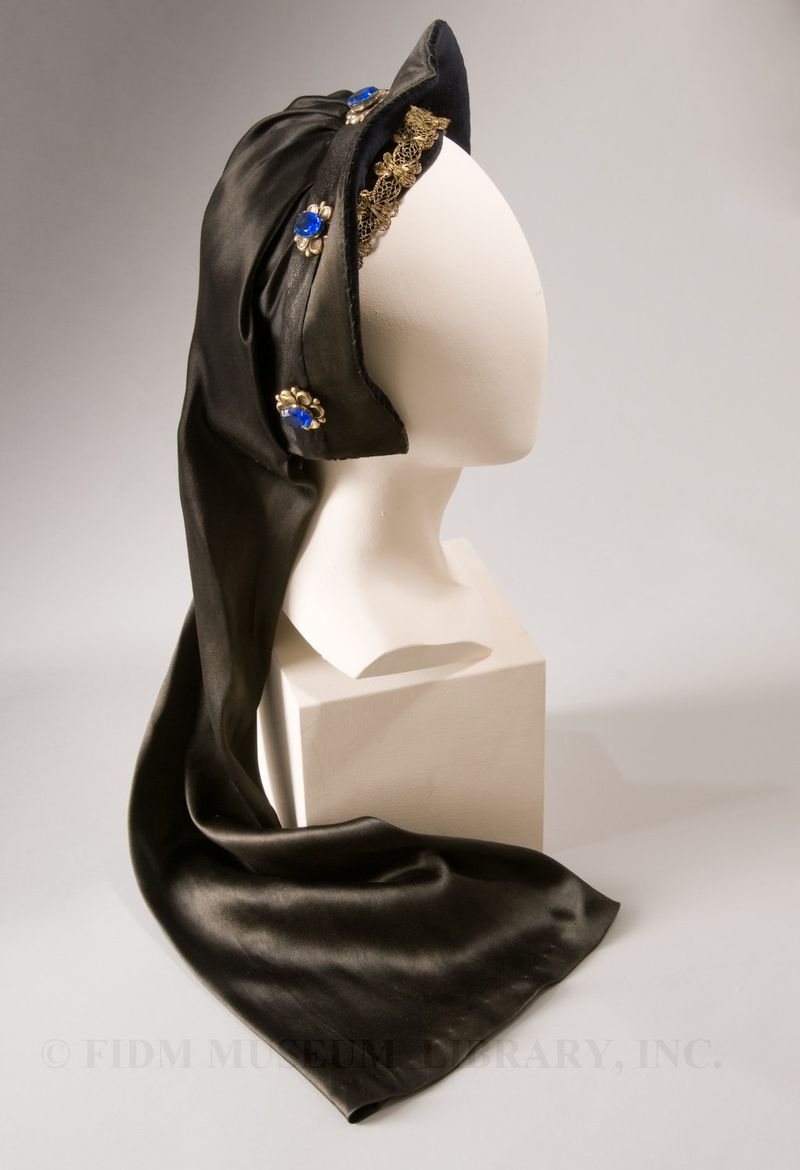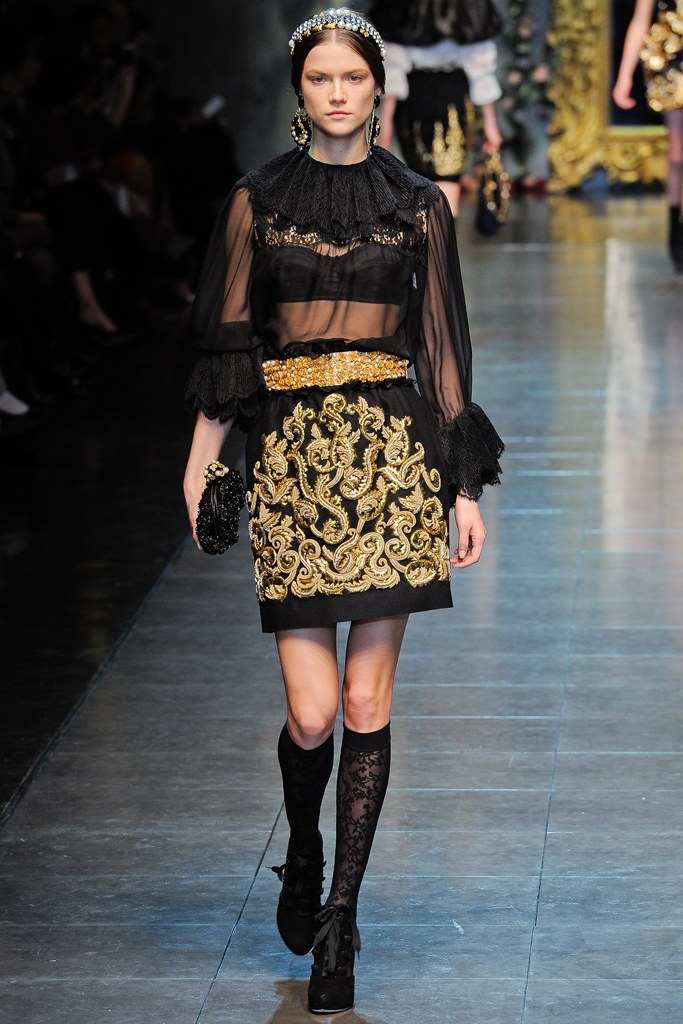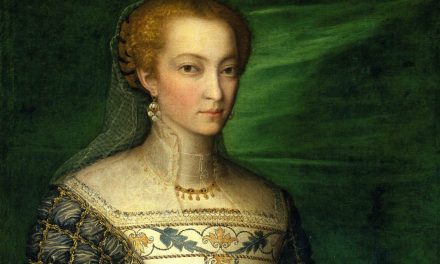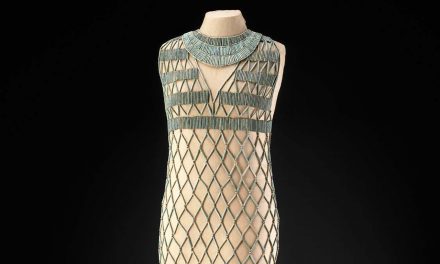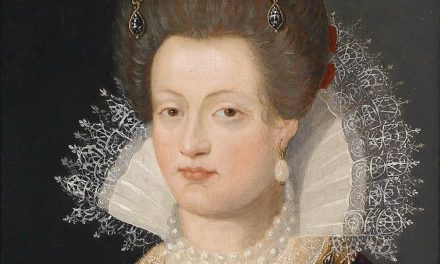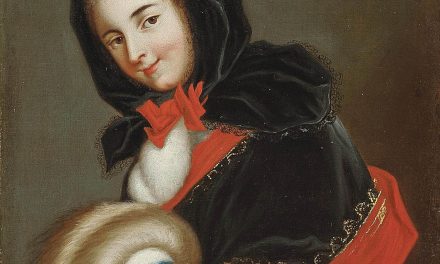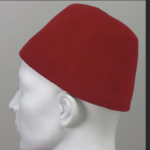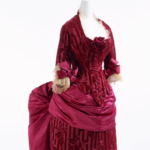A rounded headdress for women that was popular in the 16th century (from 1540).
The Details
T
he Dictionary of Fashion History (2010) defines the French hood as:
“A small bonnet made on a stiff frame, worn far back on the head, the front border curving forward on each side to cover the ears. This border was usually trimmed with an inched edging, behind which was the nether billiment of goldsmith’s work; further back, arched over the crown, was the upper billiment. Behind this, falling down the back of the neck, was fabric in formal pleats or, more often, a stiffened flap which could be turned up and worn flat on the crown, the straight edge projecting over the forehead and known as a cornet or bongrace.
The English variation of the French hood (1525–1558), associated with Queen Mary I, was flattened across the head, projecting wide of the temples, then turned in at an angle to cover the ears, otherwise the same.”
To further describe the French hood, Phyllis G. Tortora in The Fairchild Books Dictionary of Fashion (2013) writes:
“Woman’s headdress, consisting of a small bonnet over a stiffened frame, worn at the back of the head and trimmed with Ruching. [The] Front border was curved forward cover to the ears and had two ornamental gold bands or Billiments. A black flap either enclosed the hair or was folded forward over head, projecting above forehead. Fashionable from 1521 to 1590 and worn by some until 1630.” (220)
Daniel Delis Hill in History of World Costume and Fashion (2011) explains the reason behind the design and history. He writes:
“The French hood was redesigned into a crescent-shaped cap that sat back on the head exposing the hair. A chin strap was required to hold heavy ornaments cap in place. The lappets has disappeared, and the hood was shortened to about shoulder length. Catherine Howard, Henry VIII’s fifth wife, introduced the French version to England’s court.” (381)
Fig. 1 - Hans Holbein the Younger (German, 1497 - 1543). Unknown Woman, Formerly Known as Catherine Howard, 1540. Oil on canvas; 73.7 cm x 49.5 cm (29 x 19 1/2 in). London: National Portrait Gallery, NPG 1119. Purchased, 1898. Source: National Portrait Gallery
Fig. 2 - Netherlandish Painter. Portrait of a Young Woman, ca. 1535. Oil on wood; 26.7 x 21 cm (10 1/2 x 8 1/4 in). New York: The Metropolitan Museum of Art, 49.7.32. The Jules Bache Collection, 1949. Source: The Metropolitan Museum of Art
Fig. 3 - Master John (English). Katherine Parr, 1544 - 1545. Oil on panel; 180 x 94 cm (71 x 37 inches). London: National Portrait Gallery, NPG 4451. Purchased with help from the Gulbenkian Foundation, 1965. Source: National Portrait Gallery
Fig. 4 - Hans Holbein the Younger (German, 1497 - 1543). Portrait of a Young Woman, 1540 - 1545. Oil and gold on oak; 28.3 x 23.2 cm (11 1/8 x 9 1/8 in). New York: The Metropolitan Museum of Art, 49.7.30. The Jules Bache Collection, 1949. Source: The Metropolitan Museum of Art
The FIDM Museum houses a recreation of a French Hood worn by Queen Elizabeth I for the film the Young Bess released in 1953, created by Walter Plunkett (Fig. 5). The FIDM writes:
“The head-wear seen in these images is based on the French hood, a type of head-covering which gained wide-spread popularity among aristocratic English women by the late 1540s. As the name suggests, this style of hood migrated from France to England, probably in the 1520s. Comprised of a stiffened foundation shaped into a curved, close-fitting cap and a veil-like fall of fabric at the back, the French hood was placed back on the head, covering the ears and exposing the center parted hair of the wearer. It was worn over a coif, a small cap of linen or silk which covered and restrained the hair. A French hood was almost always black, though sometimes white or red. This c. 1546 portrait of ‘Young Bess’ shows her wearing a red French hood. On occasion, the length of fabric at the back was folded forward to protect the face from sun. When worn in this fashion, it was called a bongrace.”
Fig. 5 - Walter Plunkett (American, 1902-1982). French hood worn by Jean Simmons in Young Bess, 1953. Silk. Los Angeles: FIDM Museum, 2003.798.1. Gift of Stacey Behlmer. Source: FIDM Museum
Fig. 6 - Dolce and Gabbana (Italian). Diamond faced French hood with a modern twist, Fall/Winter 2012. Source: Vogue
Its Afterlife
Dolce and Gabbana’s Fall/Winter 2012 collection (Fig. 6) showed inspiration from the 16th-century French hood.
References:
- Cumming, Valerie, C. Willett Cunnington, Phillis Cunnington, Charles Relly Beard, and C. Willett Cunnington. The Dictionary of Fashion History. Oxford ; New York: Berg, 2010. http://www.worldcat.org/oclc/1002419232.
- “French Hood.” Wikipedia, July 31, 2017. https://en.wikipedia.org/w/index.php?title=French_hood&oldid=793264052.
- Hill, Daniel Delis. History of World Costume and Fashion. Upper Saddle River, N.J: Pearson Prentice Hall, 2011. http://www.worldcat.org/oclc/731445106.
- Tortora, Phyllis G., Sandra J. Keiser, and Bina Abling. The Fairchild Books Dictionary of Fashion. 4th edition. New York, NY: Fairchild Books, an imprint of Bloomsbury Publishing Inc, 2014. http://www.worldcat.org/oclc/900349357.
- “Young Bess French Hood.” FIDM Museum Blog. Accessed October 4, 2017. http://blog.fidmmuseum.org/museum/2010/04/young-bess-french-hood.html.


